From Tourist to Model
How Wearing a Kimono in Kyoto Transforms You
Discover the magical transformation that happens when you slip into a traditional kimono while exploring Kyoto’s ancient streets – and capture it all with stunning professional photography.
- The Magic of Kimono Transformation in Kyoto
- Why Kyoto is the Perfect Backdrop for Kimono Photography
- The Psychology Behind the Kimono Experience
- Choosing the Perfect Kimono Style in Kyoto
- Best Locations for Kimono Photography in Kyoto
- Professional Photography Tips for Kimono Portraits
- Cultural Etiquette When Wearing Kimono in Kyoto
- The Complete Kimono Experience: From Dressing to Photography
- Conclusion: Your Kimono Transformation Awaits in Kyoto
The Magic of Kimono Transformation in Kyoto

Walking through Kyoto’s cobblestone streets in a traditional kimono isn’t just about wearing beautiful clothing – it’s about stepping into a completely different version of yourself. The moment you slip into those silk layers, something remarkable happens: your posture changes, your movements become more graceful, and suddenly, you’re not just a tourist anymore. You’ve become part of Kyoto’s living history.
This transformation is profound and immediate. The weight of the silk obi around your waist naturally straightens your spine, while the restrictive yet elegant design of the kimono encourages smaller, more deliberate steps. Your hands find new positions, often clasped gently in front or delicately holding the fabric edges. Even your facial expressions soften, reflecting the serene beauty of this ancient garment.
For visitors to Kyoto, wearing a kimono represents more than just a photo opportunity – it’s a cultural immersion experience that connects you to centuries of Japanese tradition. The ancient capital of Japan, with its preserved temples, traditional architecture, and bamboo groves, provides the perfect stage for this transformation to unfold naturally.
Professional photographers in Kyoto understand this magical change and know exactly how to capture it. At AllPhoto Kyoto, experienced photographers specialize in documenting these transformation moments, ensuring that your kimono experience in Kyoto is preserved in stunning, professional-quality images that you’ll treasure forever.
Why Kyoto is the Perfect Backdrop for Kimono Photography

Kyoto stands unrivaled as the ultimate destination for kimono photography, and there are compelling reasons why this ancient city creates such breathtaking imagery. Unlike Tokyo’s modern skyline, Kyoto has preserved its historical districts, offering authentic Japanese settings that complement the traditional kimono perfectly.
Historical Authenticity
The Gion district, with its traditional wooden machiya townhouses and stone-paved streets, creates an atmosphere where kimono-clad figures look completely natural. These aren’t recreated historical sets – they’re the real streets where geishas have walked for centuries, making your kimono photography experience authentic and meaningful.
Arashiyama’s famous bamboo grove provides another iconic backdrop that photographers dream of. The towering green bamboo creates natural columns of light and shadow, while the filtered sunlight adds an ethereal quality to kimono portraits. The contrast between the deep greens of the bamboo and the vibrant colors of traditional kimono creates visually striking compositions.
Seasonal Beauty
Kyoto’s distinct seasons each offer unique opportunities for kimono photography. Spring brings the famous cherry blossoms (sakura), creating a romantic pink canopy perfect for soft, dreamy portraits. The delicate pink petals complement the subtle patterns found in many spring kimono designs.
Summer in Kyoto means vibrant green foliage and the opportunity to wear lighter yukata (summer kimono). The lush gardens of temples like Kiyomizu-dera provide cooling shade and beautiful natural backgrounds for photography sessions.
Autumn transforms Kyoto into a painter’s palette of reds, oranges, and golds. The maple trees create stunning natural backdrops that complement the rich, warm colors traditionally worn during this season. Temple gardens become outdoor galleries of natural beauty.
Winter brings a subtle elegance to Kyoto, with bare tree branches creating delicate silhouettes against overcast skies. Snow-dusted temple roofs and gardens provide a minimalist beauty that allows the intricate details of winter kimono to stand out dramatically.
Cultural Significance
Wearing kimono in Kyoto isn’t cultural appropriation when done respectfully – it’s cultural appreciation. The city welcomes visitors who want to experience this aspect of Japanese culture, and many businesses specialize in helping tourists understand and properly wear these traditional garments.
The Psychology Behind the Kimono Experience
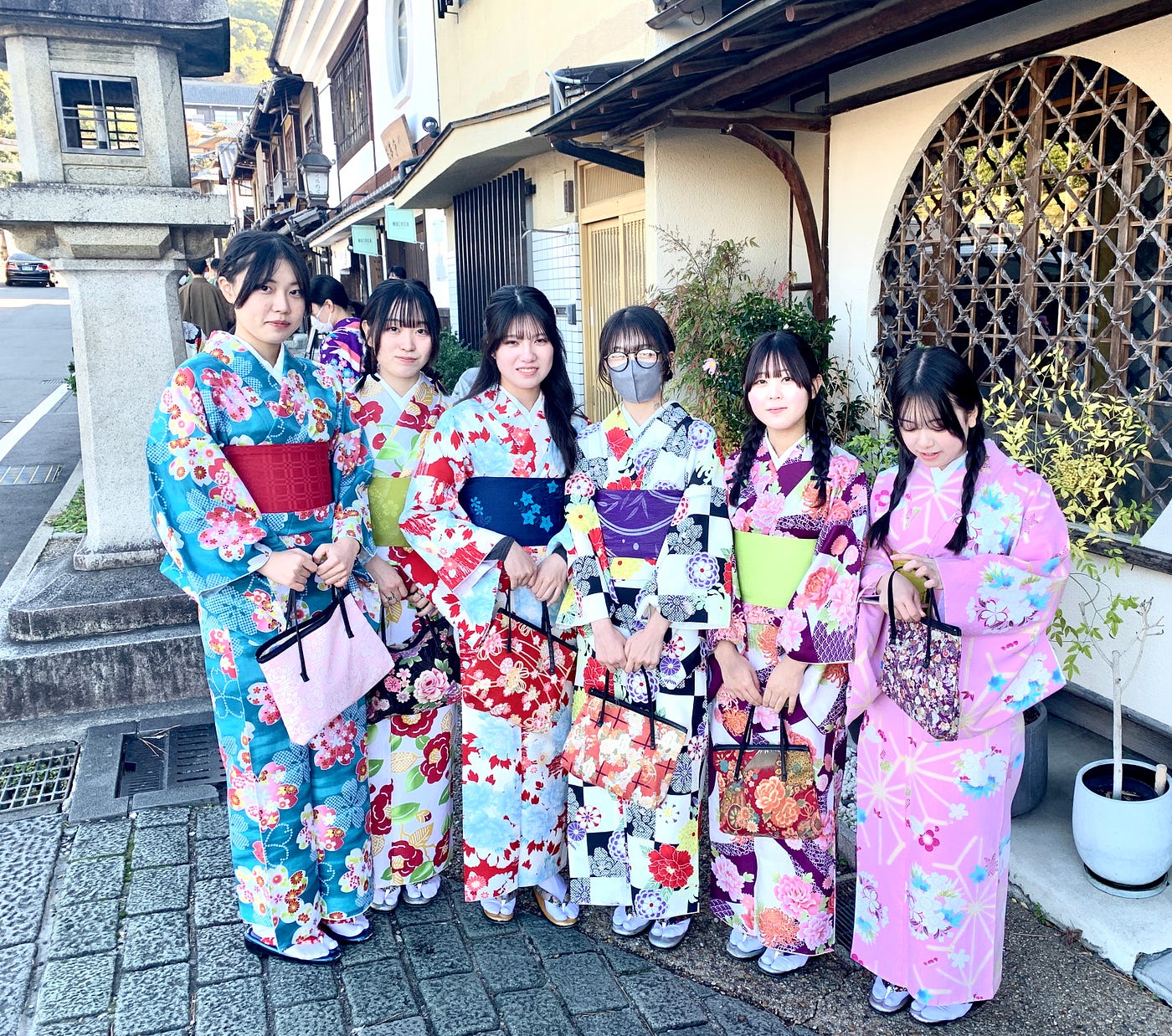
The transformation that occurs when wearing kimono goes beyond the physical changes – it’s deeply psychological. Research in fashion psychology suggests that clothing can significantly impact our behavior, confidence, and self-perception, a phenomenon known as “enclothed cognition.”
Mindfulness and Presence
The process of wearing kimono naturally encourages mindfulness. The careful layering of garments, the precise positioning of the obi, and the attention required for proper draping forces you to slow down and be present in the moment. This mindfulness continues throughout your photography session, creating a meditative quality in your expressions and poses.
Confidence Through Elegance
Many visitors report feeling more confident and elegant when wearing kimono. The structured design provides a sense of poise and dignity that translates beautifully in photographs. The way kimono naturally guides your posture and movement creates an instant elegance that’s difficult to achieve in modern clothing.
Connection to History
Wearing kimono in Kyoto creates a tangible connection to Japanese history and culture. This connection often evokes feelings of respect, wonder, and cultural appreciation that show clearly in professional photographs. The emotional depth added to your images makes them far more meaningful than typical tourist photos.
Choosing the Perfect Kimono Style in Kyoto
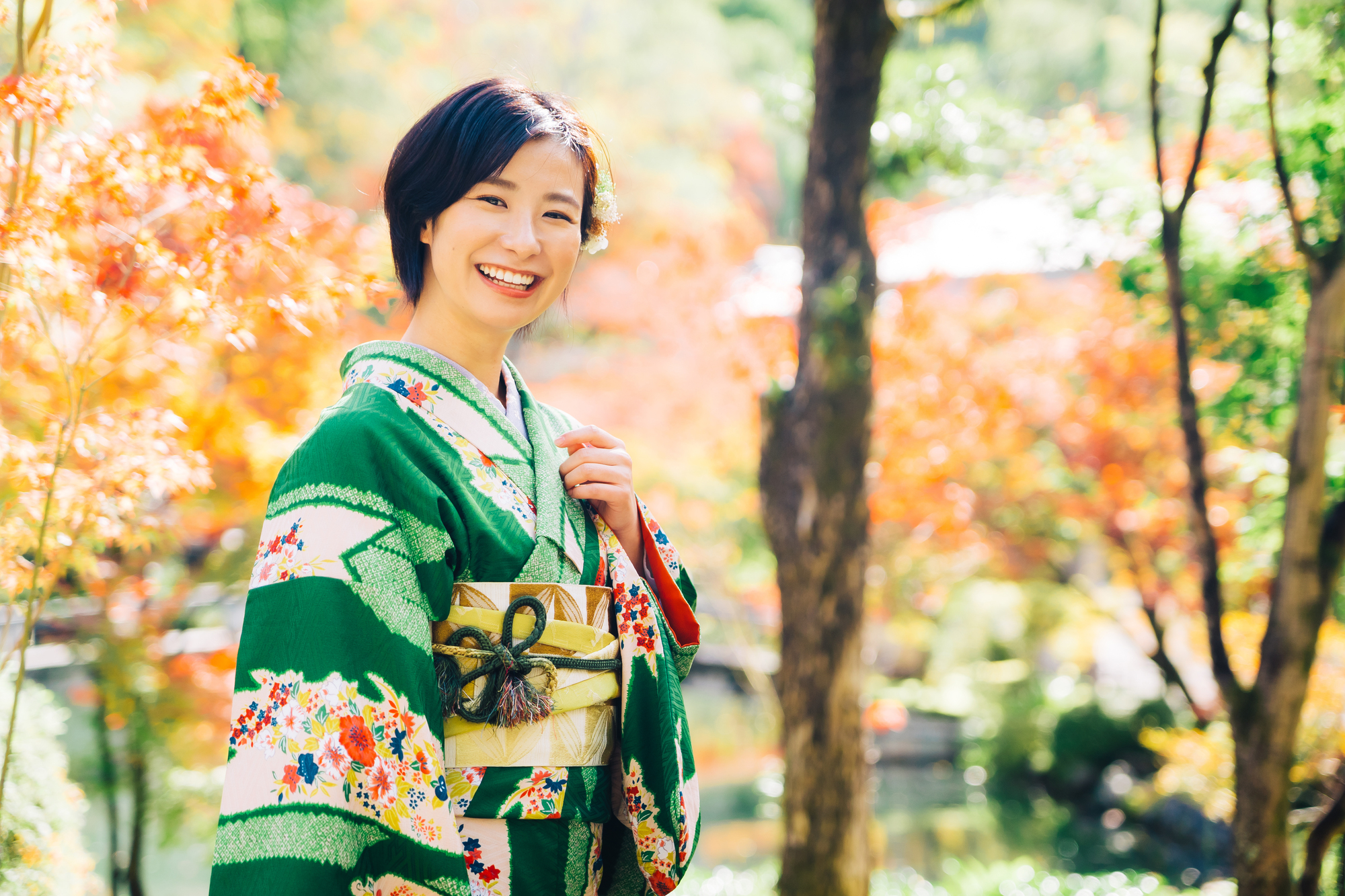
Selecting the right kimono for your Kyoto photography experience involves understanding different styles, colors, and seasonal appropriateness. Professional kimono rental shops in Kyoto offer expert guidance, but knowing the basics helps you make informed choices.
Traditional vs. Modern Styles


Traditional kimono features classic patterns like cherry blossoms, chrysanthemums, or geometric designs in subdued colors. These work exceptionally well in Kyoto’s historical districts, creating harmonious compositions with ancient architecture.
Modern kimono incorporates contemporary colors and patterns while maintaining traditional construction. Bright colors and bold patterns can create striking contrasts against Kyoto’s more subdued backgrounds, making for dynamic photography.
Color Coordination with Kyoto’s Seasons
Spring kimono traditionally feature pink, light green, and white colors with floral motifs. These complement Kyoto’s cherry blossom season perfectly and photograph beautifully against the city’s pink-tinted spring landscape.
Summer selections focus on cooler colors like blues, purples, and whites. Yukata, the lighter summer version of kimono, provides comfort during Kyoto’s humid summers while still creating beautiful photography opportunities.
Autumn kimono showcase rich reds, oranges, and deep purples that echo the changing maple leaves throughout Kyoto’s temples and gardens. These warm colors create stunning contrast against autumn backgrounds.
Winter choices often feature deeper, more muted colors like navy, burgundy, and forest green. These sophisticated tones photograph beautifully against Kyoto’s winter landscape and snow-touched temples.
Body Type Considerations
Different kimono styles flatter different body types, and experienced kimono stylists in Kyoto can help you choose the most flattering options:
- Petite frames benefit from smaller patterns and lighter colors that don’t overwhelm
- Taller figures can wear larger patterns and bolder colors with confidence
- Curvier bodies look elegant in darker colors with vertical elements
- Athletic builds are enhanced by softer patterns and feminine details
Best Locations for Kimono Photography in Kyoto
Kyoto offers countless stunning locations for kimono photography, each providing unique backdrops and atmospheric qualities. Professional photographers familiar with the city know exactly when and how to photograph at each location for optimal results.
Gion District: The Heart of Traditional Kyoto
The Gion district remains Kyoto’s most iconic location for kimono photography. The preserved wooden buildings, stone streets, and traditional architecture create an authentic historical setting where kimono naturally belongs.
Best shooting times: Early morning (7-9 AM) offers the best light and fewer crowds. The soft morning light creates gentle shadows that flatter kimono and traditional architecture equally.
Key photo spots include:
- Hanami-koji Street with its traditional restaurants and tea houses
- Shirakawa area with its canal-side dining and historic buildings
- The famous red torii gates leading to small shrines
Arashiyama Bamboo Grove: Nature’s Cathedral
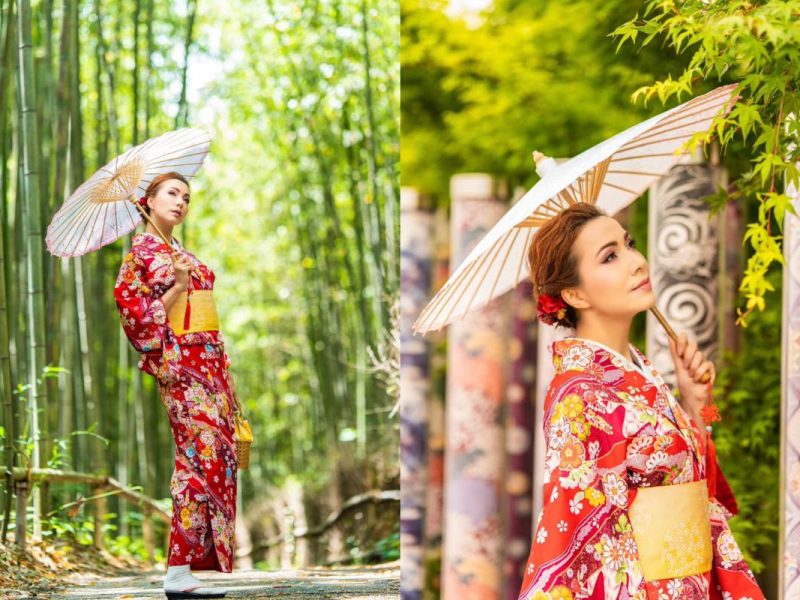
The towering bamboo creates natural columns that frame kimono-clad subjects beautifully. The filtered green light adds an otherworldly quality to photographs, making this location a favorite among professional photographers.
Photography considerations: The bamboo grove can be crowded during peak times, so early morning or late afternoon sessions work best. The dappled light requires careful exposure to capture both the kimono details and the bamboo atmosphere.
Kiyomizu-dera Temple: Elevated Beauty
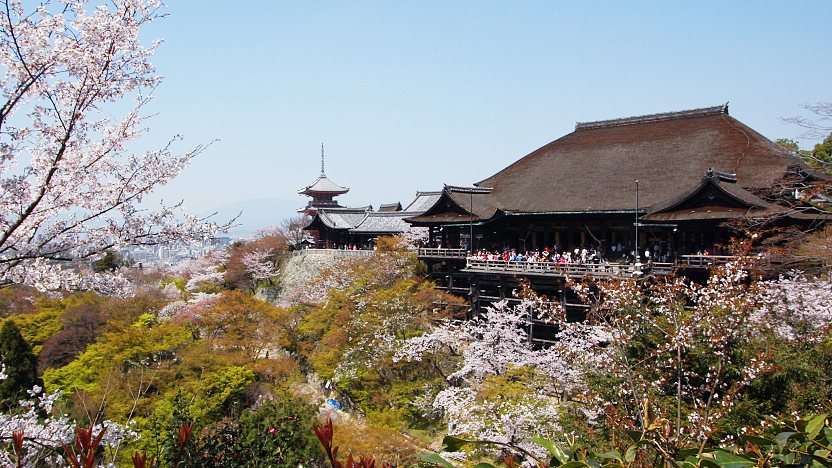
This UNESCO World Heritage site offers multiple photography opportunities, from the temple’s famous wooden stage overlooking the city to the atmospheric approach streets lined with shops and traditional buildings.
Seasonal advantages: Each season offers different photographic opportunities here:
- Spring: Cherry blossoms frame the temple
- Summer: Lush green foliage provides cooling backgrounds
- Autumn: Spectacular maple colors create warm, rich backdrops
- Winter: Snow-touched roofs and minimalist beauty
Fushimi Inari Shrine: Thousand Torii Gates

The famous tunnel of red torii gates creates a dramatic backdrop for kimono photography. The repetitive architectural elements provide strong compositional lines, while the bright red color creates beautiful contrast with most kimono colors.
Best practices: Early morning visits avoid crowds and provide better lighting conditions. The steep climb requires careful consideration of kimono and footwear choices.
Philosopher’s Path: Contemplative Beauty
This peaceful walkway alongside a canal offers a more intimate setting for kimono photography. The tree-lined path provides natural framing, while the canal adds reflective elements to compositions.
Seasonal highlights: Spring cherry blossoms create a pink canopy over the path, while autumn maples provide warm color palettes. The path’s contemplative atmosphere complements the serene quality of kimono portraits.
Professional Photography Tips for Kimono Portraits
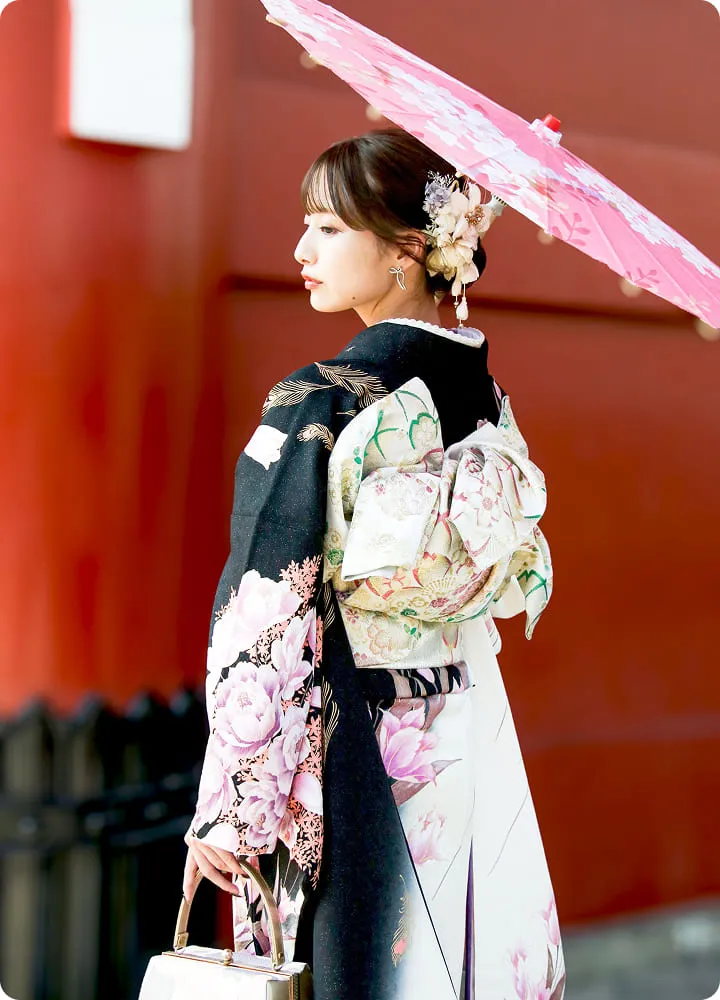
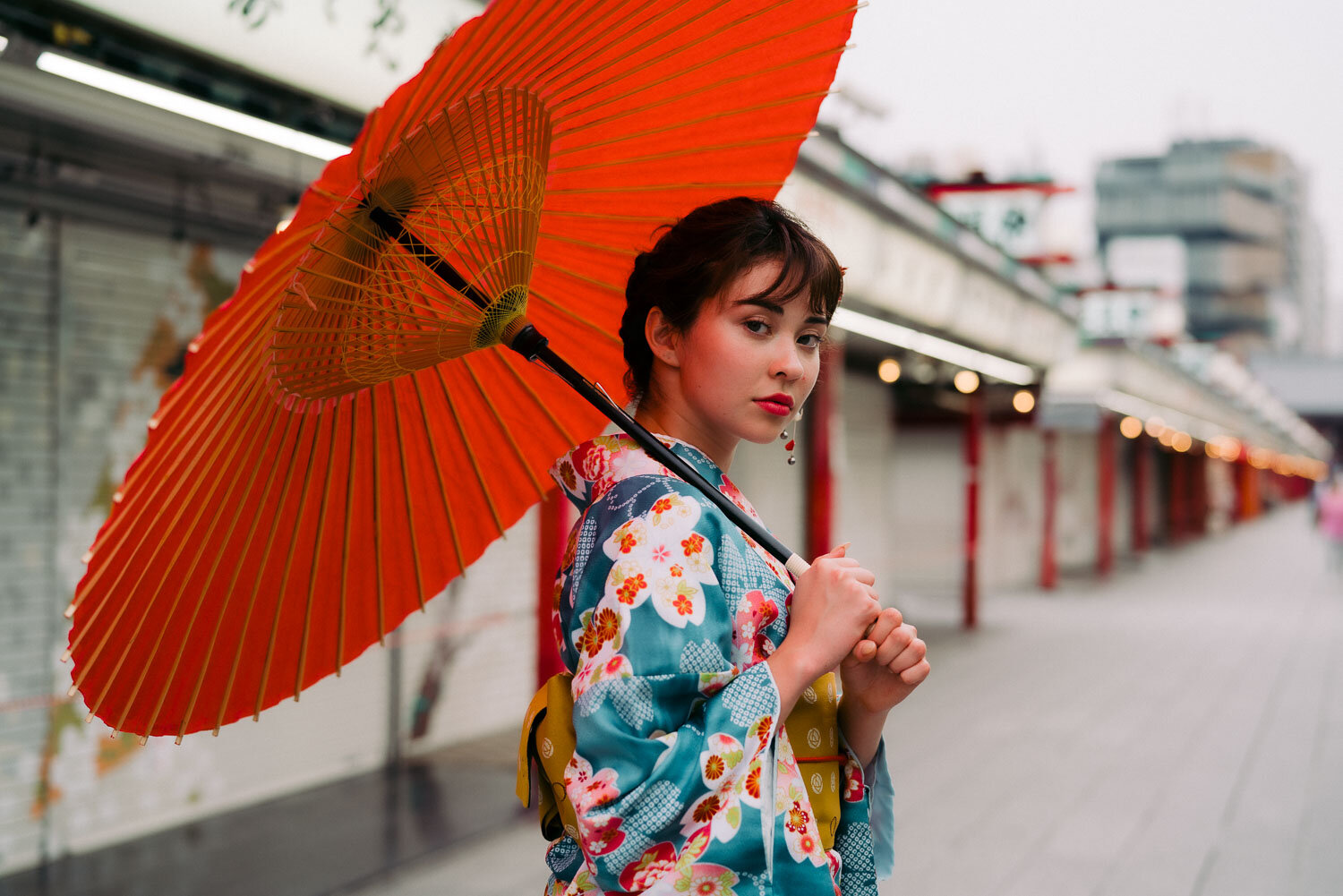
Creating stunning kimono photographs requires understanding both the garments and the locations. Professional photographers in Kyoto have developed specific techniques for capturing the beauty and elegance of kimono in the city’s various settings.
Lighting Considerations
Natural light works best for kimono photography, as it reveals the subtle colors and textures of silk fabrics. The soft, diffused light common in Kyoto’s temple gardens and covered walkways creates flattering illumination without harsh shadows.
Golden hour photography (the hour after sunrise and before sunset) provides warm, soft light that complements the traditional colors found in many kimono. This lighting adds warmth to skin tones and makes silk fabrics appear to glow.
Overcast conditions often provide the most flattering light for kimono portraits, creating even illumination that shows fabric details clearly while maintaining soft, natural-looking skin tones.
Composition Techniques
Rule of thirds works exceptionally well with kimono photography, placing the subject slightly off-center to create more dynamic compositions. This technique works particularly well in Kyoto’s architectural settings.
Leading lines are abundant in Kyoto, from temple steps to street patterns. Using these elements to guide the viewer’s eye toward the kimono-clad subject creates powerful, engaging compositions.
Framing elements like temple gates, bamboo stalks, or traditional doorways can be used to create natural frames around subjects, adding depth and context to kimono portraits.
Posing Guidance
Traditional poses reflect the elegance and grace associated with kimono. Gentle hand positions, slightly turned bodies, and serene facial expressions capture the spirit of traditional Japanese aesthetics.
Movement shots can be particularly beautiful, capturing the flow of silk fabric as subjects walk along Kyoto’s traditional streets or through temple gardens.
Group compositions work well when everyone is wearing kimono, creating harmonious color palettes and shared cultural experiences that photograph beautifully.
Cultural Etiquette When Wearing Kimono in Kyoto
Wearing kimono in Kyoto comes with important cultural responsibilities. Understanding and respecting Japanese customs ensures that your experience is positive for both you and the local community.
Respectful Behavior
Temple etiquette requires removing hats, maintaining quiet voices, and following photography rules. Some temples restrict photography in certain areas, and these rules must be respected regardless of how beautiful the setting might be for kimono photos.
Street behavior should reflect the dignity of the garment you’re wearing. Avoid loud behavior, excessive public displays, or anything that might be seen as disrespectful to the cultural significance of kimono.
Photography courtesy includes being mindful of other visitors, not blocking pathways for extended photo sessions, and respecting private property boundaries.
Understanding Cultural Significance
Kimono patterns often have seasonal and cultural meanings. Learning about these meanings adds depth to your experience and helps you make appropriate choices for different times of year and occasions.
Color significance in Japanese culture can affect the appropriateness of certain combinations for specific locations or seasons. Professional kimono rental shops provide guidance on these cultural nuances.
Historical context understanding helps you appreciate the cultural weight of the experience and photograph it with appropriate reverence and respect.
The Complete Kimono Experience: From Dressing to Photography

The full kimono experience in Kyoto extends far beyond simply putting on the garments. It’s a comprehensive cultural immersion that begins with the dressing process and culminates in professional photography that captures your transformation.
The Dressing Ritual
Professional assistance is typically required for proper kimono dressing. The process involves multiple layers, precise measurements, and specialized techniques that ensure both comfort and authenticity.
Time considerations should include at least 45 minutes for the dressing process, plus additional time for hair styling and accessories. This unhurried approach ensures the best possible results and allows you to mentally prepare for your photography session.
Accessory selection includes choosing appropriate obi (sashes), hair ornaments, bags, and footwear. Each element contributes to the overall aesthetic and should be coordinated for the best photographic results.
Photography Session Planning
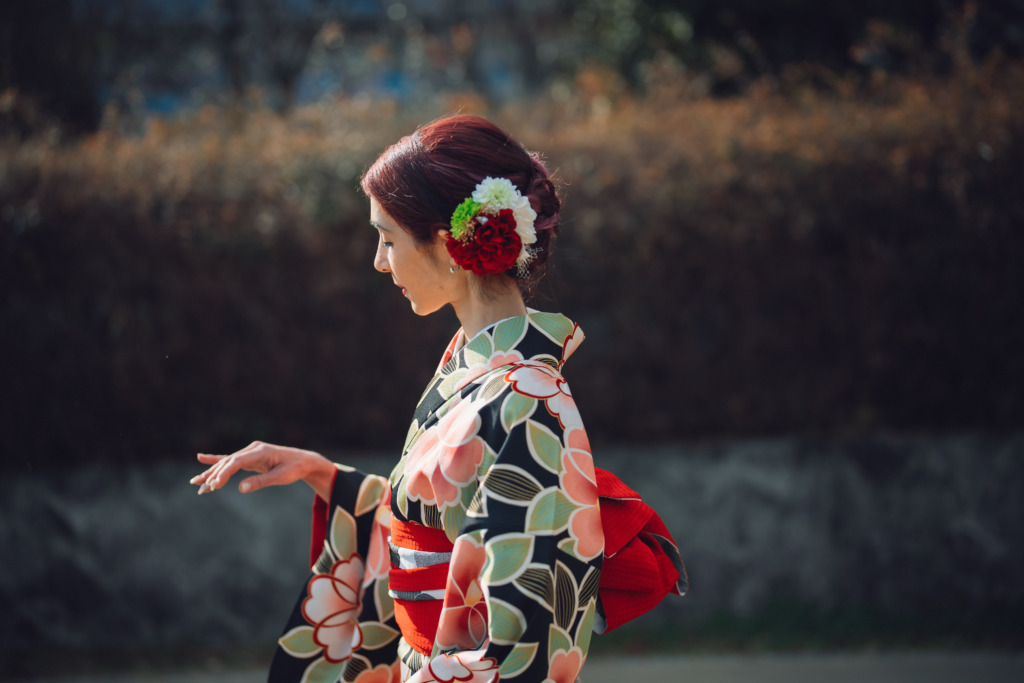
Location scouting with your photographer ensures that you visit the most photogenic spots during optimal lighting conditions. Professional photographers in Kyoto know the best times to visit each location for both lighting and crowd considerations.
Weather contingencies are important in Kyoto’s variable climate. Professional photography services often have backup indoor locations or covered areas that provide beautiful settings regardless of weather conditions.
Duration planning should allow sufficient time to visit multiple locations and capture a variety of shots. Most professional kimono photography sessions in Kyoto last 2-4 hours, allowing for travel between locations and multiple outfit or accessory changes.
Maximizing Your Investment
Multiple looks can often be created with accessory changes, different obi tying styles, or adding or removing outer layers. This variety ensures a diverse portfolio of images from your kimono experience.
Professional editing services can enhance your images while maintaining their natural beauty. Subtle color correction, lighting adjustments, and composition refinements create magazine-quality results.
Product options range from digital galleries to printed albums, allowing you to preserve and share your kimono transformation experience in formats that suit your preferences and budget.
Conclusion: Your Kimono Transformation Awaits in Kyoto

The transformation from tourist to model that occurs when wearing kimono in Kyoto is both immediate and profound. This ancient garment, combined with the city’s preserved historical settings, creates an experience that goes far beyond typical travel photography.
Whether you’re drawn to the spiritual atmosphere of temple grounds, the romantic beauty of cherry blossom seasons, or the dramatic architecture of traditional districts, Kyoto provides the perfect stage for your kimono photography experience. The key lies in choosing professional services that understand both the cultural significance of kimono and the technical aspects of capturing its beauty.
AllPhoto Kyoto specializes in creating these transformative experiences, combining cultural knowledge with photographic expertise to document your journey from tourist to model. Their professional photographers understand Kyoto’s best locations, optimal timing, and the techniques needed to capture the elegance and grace that kimono naturally brings out.
Your kimono transformation in Kyoto isn’t just about beautiful photographs – it’s about connecting with Japanese culture, experiencing the city’s historical beauty, and creating memories that will last a lifetime. The images you take home will serve as lasting reminders of the day you stepped into history and discovered a more elegant version of yourself in the ancient capital of Japan.
Ready to experience your own transformation? Book your professional kimono photography session in Kyoto and discover how this ancient garment can reveal your inner model while creating stunning memories in one of the world’s most beautiful cities.
Ready for Your Kimono Transformation?
Experience the magic of kimono transformation in Kyoto with professional photography services that capture both the beauty of the garments and the city’s timeless elegance. Book your session today and create memories that will last a lifetime.
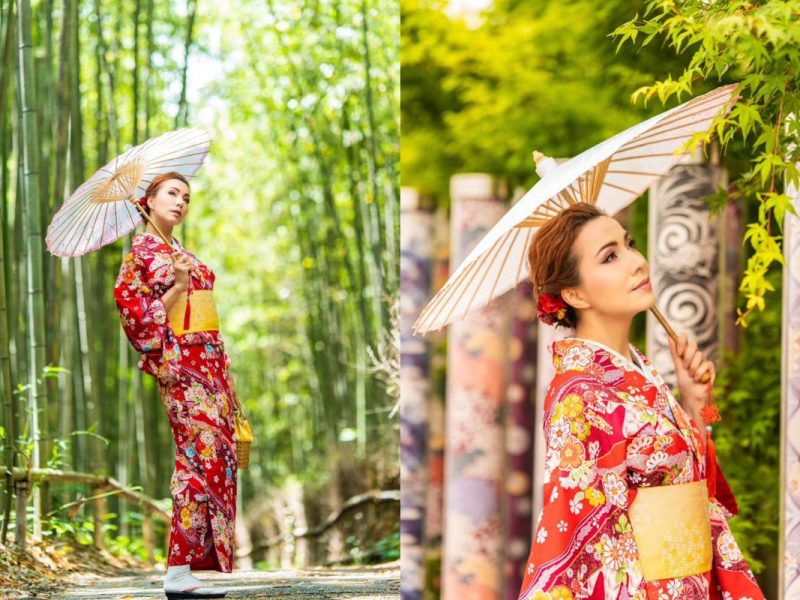


コメント